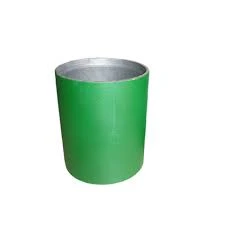- Afrikaans
- Albanian
- Amharic
- Arabic
- Armenian
- Azerbaijani
- Basque
- Belarusian
- Bengali
- Bosnian
- Bulgarian
- Catalan
- Cebuano
- Corsican
- Croatian
- Czech
- Danish
- Dutch
- English
- Esperanto
- Estonian
- Finnish
- French
- Frisian
- Galician
- Georgian
- German
- Greek
- Gujarati
- Haitian Creole
- hausa
- hawaiian
- Hebrew
- Hindi
- Miao
- Hungarian
- Icelandic
- igbo
- Indonesian
- irish
- Italian
- Japanese
- Javanese
- Kannada
- kazakh
- Khmer
- Rwandese
- Korean
- Kurdish
- Kyrgyz
- Lao
- Latin
- Latvian
- Lithuanian
- Luxembourgish
- Macedonian
- Malgashi
- Malay
- Malayalam
- Maltese
- Maori
- Marathi
- Mongolian
- Myanmar
- Nepali
- Norwegian
- Norwegian
- Occitan
- Pashto
- Persian
- Polish
- Portuguese
- Punjabi
- Romanian
- Russian
- Samoan
- Scottish Gaelic
- Serbian
- Sesotho
- Shona
- Sindhi
- Sinhala
- Slovak
- Slovenian
- Somali
- Spanish
- Sundanese
- Swahili
- Swedish
- Tagalog
- Tajik
- Tamil
- Tatar
- Telugu
- Thai
- Turkish
- Turkmen
- Ukrainian
- Urdu
- Uighur
- Uzbek
- Vietnamese
- Welsh
- Bantu
- Yiddish
- Yoruba
- Zulu
bull plug dimensions
Understanding Bull Plug Dimensions A Comprehensive Overview
When it comes to the world of plumbing and piping, bull plugs are essential components that serve a critical function they effectively seal the end of a pipe, ensuring that the system remains leak-free and maintains proper pressure. In this article, we will delve into the dimensions of bull plugs, how they are measured, their various types, and their applications in different industries.
What is a Bull Plug?
A bull plug, also known commonly as a pipe plug or threaded plug, is a fitting designed to close off the end of a pipe. They are typically made from various materials such as stainless steel, brass, plastic, or iron, depending on the application's requirements. Bull plugs can come in different types, including tapered, straight, and hex styles, with each type designed for specific tasks.
Dimensions of Bull Plugs
The dimensions of a bull plug are critical, as they determine how well the plug will fit into the corresponding pipe. Here are some key factors that influence bull plug dimensions
1. Pipe Size The diameter of the pipe is a primary consideration when selecting a bull plug. Bull plugs are available in a range of sizes, usually measured in inches, to fit standard pipe sizes (both in schedule and nominal measurements).
2. Thread Type Bull plugs can have different thread types, including NPT (National Pipe Thread), BSP (British Standard Pipe), or metric threads. The thread size and pitch must match the pipe’s threading for the plug to create a secure seal.
3. Length The length of the bull plug may vary based on the design and the depth of insertion needed into the pipe. This is an essential factor, especially for applications requiring deeper plugs for better sealing.
4. Material Thickness Depending on the material used, the thickness of the bull plug can vary. Thicker plugs may provide more durability and resistance to pressure, making them suitable for high-stress applications.
5. Head Style Bull plugs may come with different head styles such as hex heads or round heads. The style chosen can influence how the plug is installed or removed.
Common Applications
bull plug dimensions

Bull plugs have a wide array of applications across various industries. Here are some of the most common uses
- Residential Plumbing In homes, bull plugs are often used to cap off unwanted pipes, preventing leakage. They are especially useful in remodels and repairs when a pipe needs to be temporarily or permanently sealed.
- Industrial Settings In factories and manufacturing plants, bull plugs seal various piping systems, including hydraulic, pneumatic, and refrigerant lines. Their ability to withstand pressure makes them suitable for high-performance environments.
- Automotive In automotive applications, bull plugs are utilized in the lubrication systems and fuel lines, where they help to maintain system integrity and performance.
Choosing the Right Bull Plug
When selecting a bull plug, it’s essential to consider the following factors
- Compatibility Ensure that the bull plug is compatible with the pipe’s material, size, and threading. - Pressure Rating Consider the maximum pressure that the bull plug will encounter in its application to avoid failures.
- Temperature Resistance Depending on the application, ensure that the material can withstand the temperature conditions.
- Corrosion Resistance In corrosive environments, select materials that can resist degradation over time.
Conclusion
Understanding bull plug dimensions and specifications is crucial for anyone involved in plumbing or piping systems. By selecting the appropriate size, thread type, and material, you can ensure the effectiveness of your piping system, avoiding leaks and ensuring long-term reliability. Whether for residential plumbing or industrial applications, bull plugs play a vital role in maintaining system integrity and performance.
-
Tubing Pup Joints: Essential Components for Oil and Gas OperationsNewsJul.10,2025
-
Pup Joints: Essential Components for Reliable Drilling OperationsNewsJul.10,2025
-
Pipe Couplings: Connecting Your World EfficientlyNewsJul.10,2025
-
Mastering Oilfield Operations with Quality Tubing and CasingNewsJul.10,2025
-
High-Quality Casing Couplings for Every NeedNewsJul.10,2025
-
Boost Your Drilling Efficiency with Premium Crossover Tools & Seating NipplesNewsJul.10,2025







